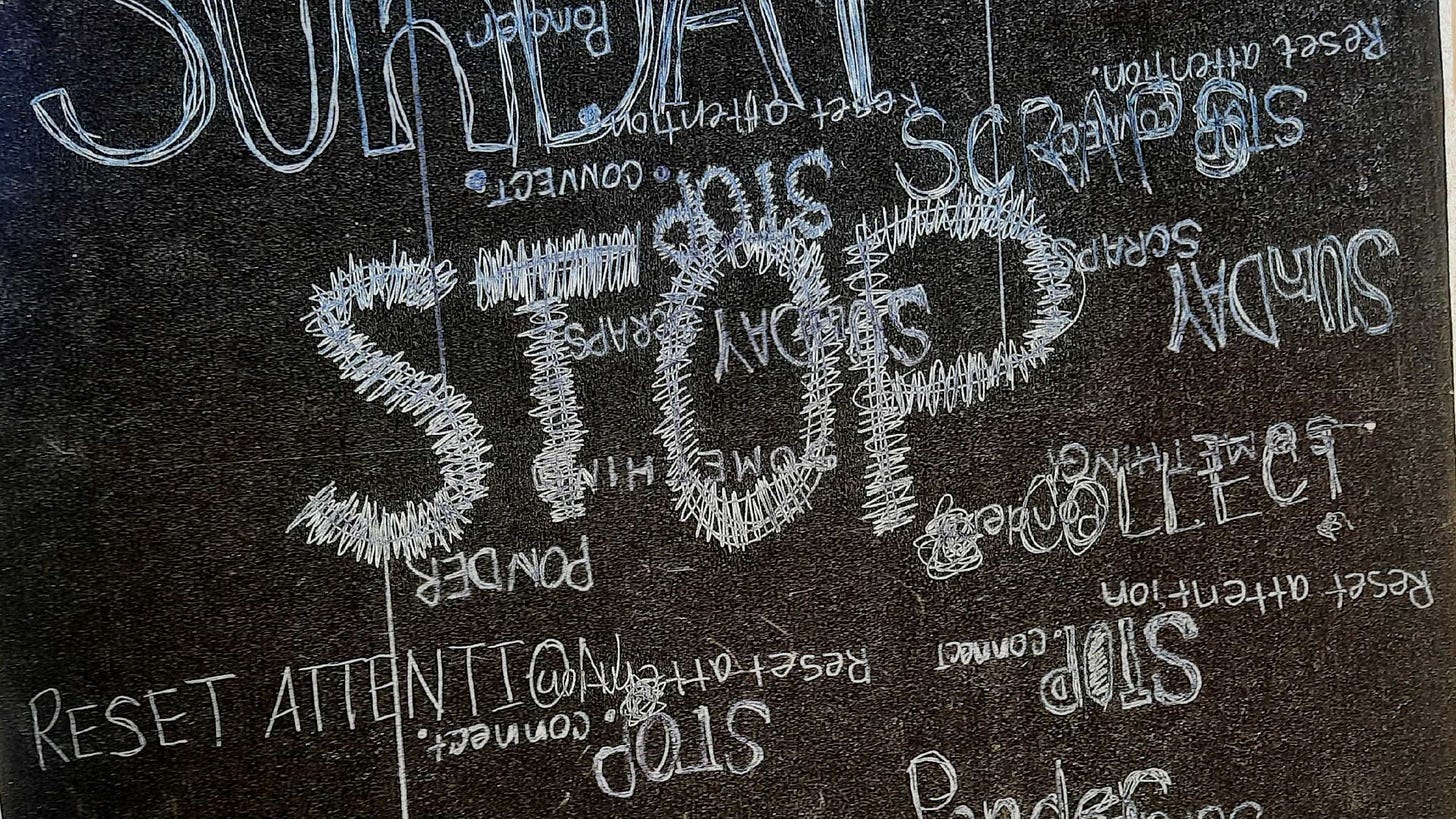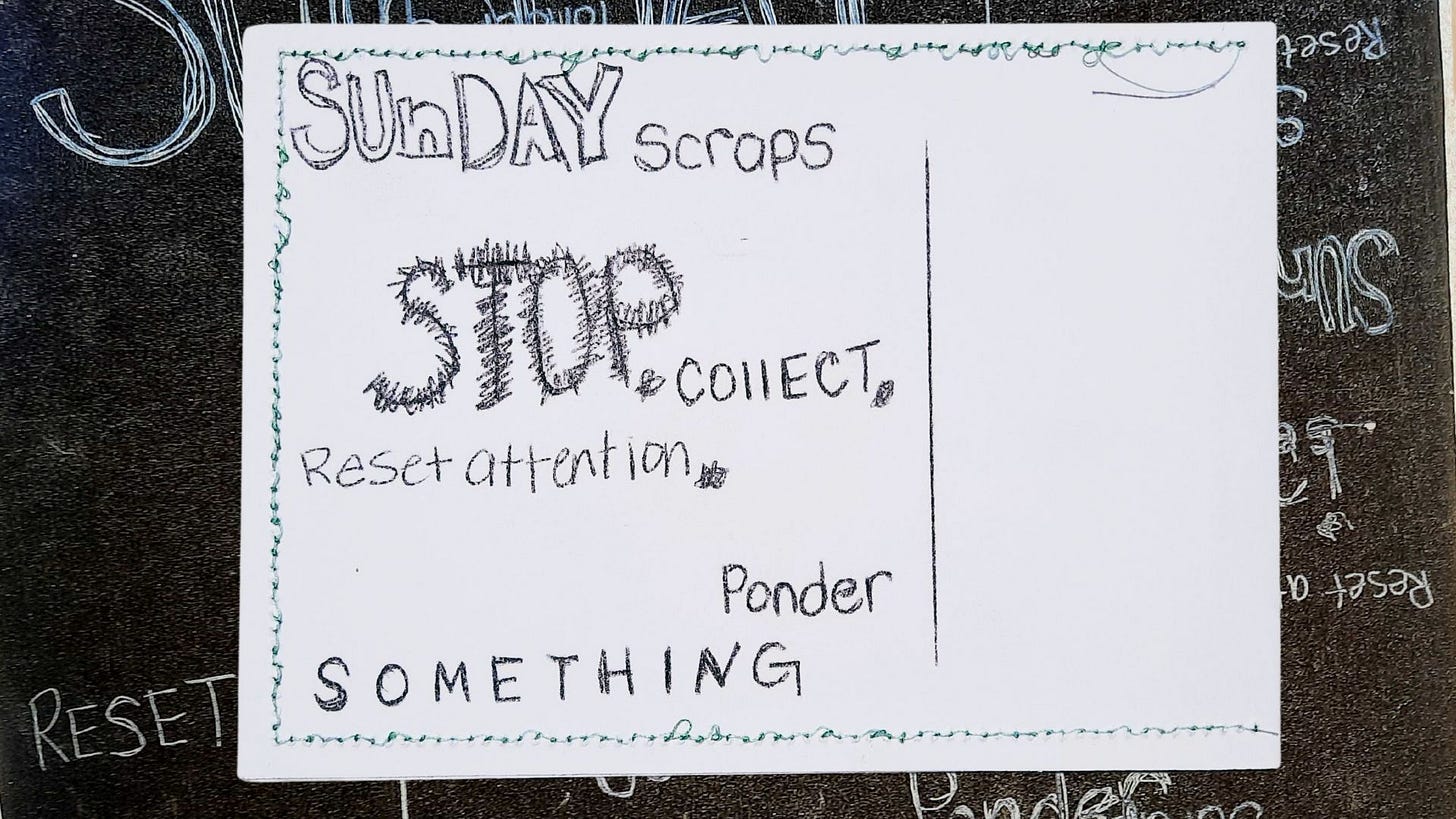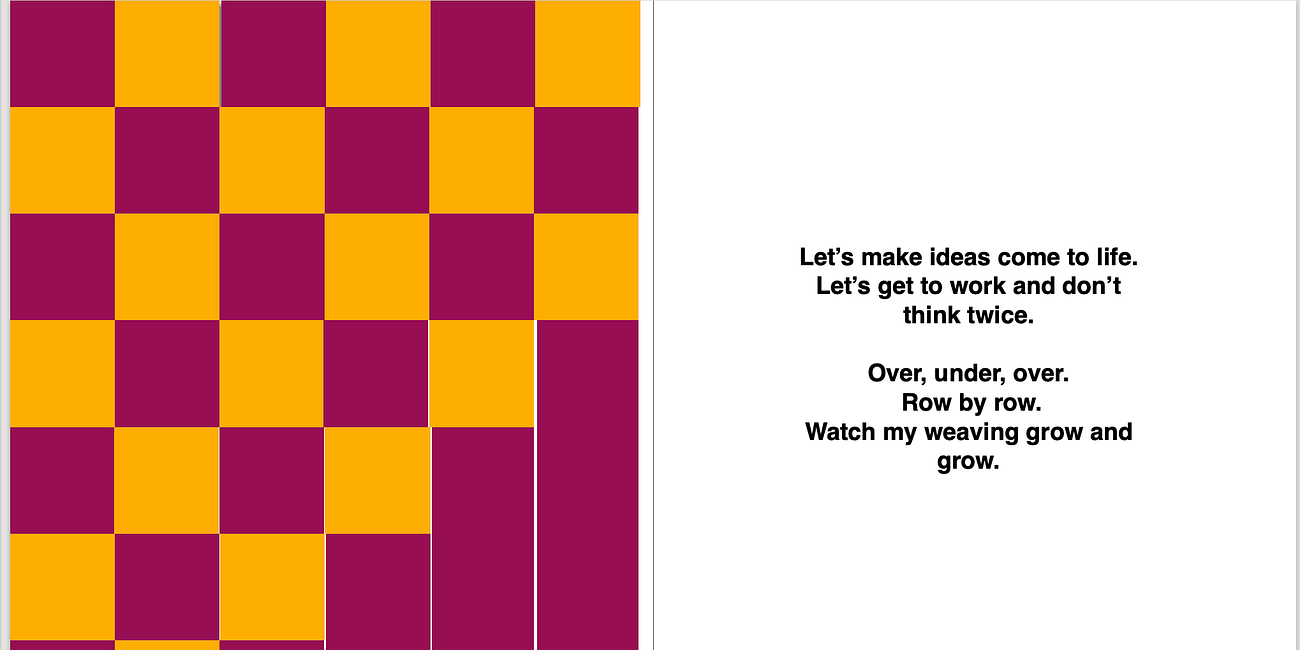Hi, it's Amber- and welcome to Sunday Scraps! Every week, I send you creative ideas, book recommendations, and, hopefully, a kind nudge to turn what you love into positive action. I'm obsessed with the materials around us and finding ways to combat the negative impact of fast fashion and overconsumption.
Three ways that you can make an impact this week:
Sign up to get a postcard: It’s 100% FREE. I make the postcard, pay for the postage, and you enjoy the note.
Do something with your hands this week and leave a comment, telling me what you did? Did you send a letter? Go for a walk and hold your partners hand? Cook a meal? Fold laundry?
If you have ideas or knowledge about working with carbon paper, I want to know more.
I know how to use a sewing machine as long as it's working, but once it starts to get grumpy and skip stitches, eating thread, or jamming needles, I'm at a loss. You'll likely hear me whispering, please just work, and sometimes the machine does seem to listen, but only for a few passes, and then it rages angrily, telling me TO LISTEN.
The internet is somewhat helpful. But only somewhat, as you will soon discover, our problem could result from doing 100 different things incorrectly. You might have the wrong thread; maybe you threaded the machine wrong; your tension could be bad; you might have the wrong foot on or the wrong needle for your fabric selection.
Faced with a long list of options, I sit and test, one thing at a time. Slowly adjusting the tension, exploring different stitches, continuing to beg the machine to be kind, and finally, we seem to agree on a combination, and off it goes.
With the frustration of a five-year-old who isn't getting what they don't know they want, I walked away from the dress-eating machine and threaded a needle to sew the hem by hand. As I stitched, I kept thinking about how this would take me forever; I was only in a hurry because I decided 5 days before that I needed to make a dress to wear to a 4th of July picnic.
But what if I didn't have to? What if I didn't need to make a dress but was making a dress because I enjoy creating? Because I'm learning a new skill and using materials and tools instead of buying new things. I let go of the speed machines provide, and I sank into the slowness of my hands.
What are we rushing towards?
We send an email or a text because it's fast and easy, but is it always better than a handwritten letter?
We ask AI to create for us because it's faster; what are you doing with the time it saves? Are you taking more walks, doing more important things, resting, or doing more of what doesn't really matter?
In 1830, Barthelemy Thimonnier invited a sewing machine that functioned as well as mine when not correctly set up. By 1831, he had a workshop of 80 sewists who used machines to sew army uniforms. Believing that the new machine would take away their work, 200 tailors threw the machines out the workshop windows, which was exactly what I wanted to do to mine after the threads tangled AGAIN.
Machines can be helpful. They also disconnect us from each other and ourselves. We forget how to use our hands, how to think, how to write, how to communicate.
What if you slowed down? What if you created with your hands? What if you made a mess? What if you made something beautiful? What if you shared with someone else?
Welcome to The Analog Habit
"Modern humanity's governing metaphor is that of the machine. Having placed ourselves in charge of creation, we began to mechanize both the creation itself and our conception of it. We began to see the whole creation merely as raw material, to be transformed by machines into manufactured paradise." -Wendell Berry
The Analog Habit
As I sewed a dress this week, the trimmed pieces were added to the growing scrap sketch. In the past, I've completed a sketch and stitched it onto the paper. This week, I continued to add to the same piece, cutting the sketch apart at the end of the week to create five new postcards. I enjoyed this process but noticed that some designs became less interesting as the work required larger pieces. To adjust, I may make small pieces and then slowly stitch them together into a larger piece, which I'll then cut apart, as I like the idea of you each getting a piece of a larger whole. Somewhat like a sourdough starter, I add and consume from the same piece.
Cutting rectangles to sew onto the postcards worked better than the freeform I attempted last week. It was easier to ensure they fit, and I like the white space that gives some breathing room to the colorful fabric.
Next, I needed to determine what to put on the back. I wanted the message to tie back to Sunday Scraps, and after capturing ideas on whatever surface was near at the moment it arrived, I determined that I could turn SCRAPS into an acronym.
Stop.
Collect. [ I also ended up writing this as connect a few times because I can't read my handwriting, but I determined collect and connect both work and moved on with my life. ]
Reset Attention.
Ponder
Something.
Next, how to get the message onto the postcard? Of course I could write it, but that didn't seem very interesting. I designed a sticker, but those wouldn't arrive for over a week, and this was breaking one of my rules of buying things instead of figuring out how to use what I had. Next, I thought I might order a custom stamp, which reminded me that my in-laws had given me a few boxes of carbon paper they no longer wanted. I'd accepted the old boxes with glee but had no idea what I would do with it. But when someone offers me paper in any form, I will 100% take it and hoard it as though it is the last box of paper available on the entire earth.
I pulled out the carbon paper and began to play. While the idea in my head didn't make it onto the page, I made progress and enjoyed exploring all the things one can do with carbon paper. That's what happens when you force yourself to come up with solutions instead of promptly clicking a few buttons and making an online purchase.
I've decided to stop calling this the postcard project and instead name it The Analog Habit, and I hope you, too, will start to develop your own Analog Habits and join mine by allowing me to send you one of my weekly creations.
Add your name and address to this sheet, and then one of the these days, you’ll wander out to your mailbox, thinking that it will be the old not exiting pile of mail that you always get, and you’ll see a pop of color, and feel a sturdy, quality piece of paper, take a moment, and remember what it was like to look forward to getting the mail. To walk out to the box, open the door, and sort through the pile, hoping something had your name on it.
Read:
I’m currently reading The Undoing Project by Michael Lewis, but don’t have any notes or quotes to share. I don’t even remember how this one ended up on my reading list, but so far, it’s keeping attention.
Watch:
I haven't used carbon paper in years, so I spent some time researching and encountered Appias Albina, and immediately became obsessed with her work. Appias is a Lithuanian printmaker, illustrator, and graphic designer who uses thermal transfer to create prints with carbon paper. It appears she lays down textures like fabric or bubble wrap, then lays down the paper, followed by a piece of carbon paper covered with tracing paper, and then runs her iron across to create magic. I spent about 5 minutes attempting to iron-carbon paper this morning with no luck, but there will be more testing in the future. If you have experience making magic with carbon paper, please share your ideas.
Wrote:
If you’re hoping to teach or further explore weaving this year, check out this list I created to help you scaffold your understanding and practice.
How to Build Your Weaving Skills
I’m so glad that you’re part of the Over_Under project, helping to keep 5,000 t-shirts out of landfills by the end of 2026. To date you’ve helped keep 300+ shirts out of landfills, I can’t complete this project without you and your friends.
What did you make with your hands today? Leave a comment and tell me more.








